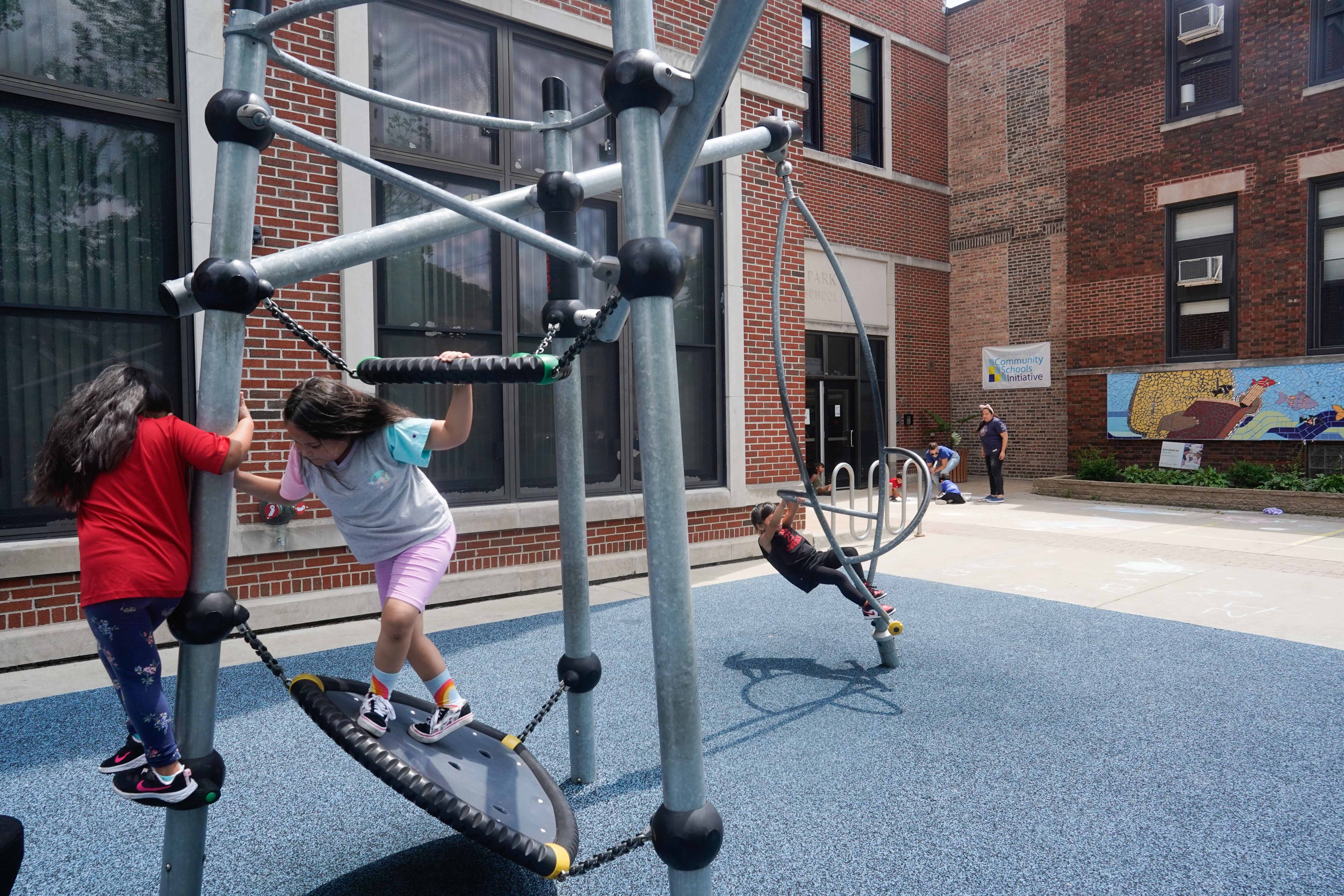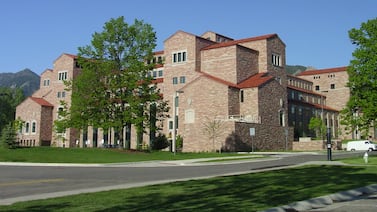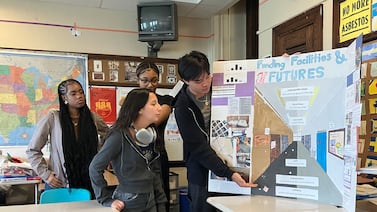Sign up for Chalkbeat Chicago’s free daily newsletter to keep up with the city’s public school system and statewide education policy.
It’s that time of year again: Chicago Public Schools opened its application Wednesday for elementary and high school seats for the 2024-25 school year with a deadline of Nov. 9 — about a month earlier than usual.
Families use the application for entry to a variety of schools, including selective test-in schools and neighborhood schools outside of their attendance boundaries. Sixth graders can also use the application for seven advanced middle school programs.
For high schools, there are several changes to this year’s admissions process:
- The High School Admissions Test, or HSAT, will last an hour instead of the previous 2 ½ hours. This shorter test “allows CPS to get the information needed on student performance for the admissions process while helping reduce anxiety for students and increasing accessibility,” a district spokesperson said.
- In addition to English, the HSAT this year will also be offered in Spanish, Arabic, Mandarin, Urdu, and Polish.
- The district has created a single admissions scoring rubric for all programs. Previously, there were multiple rubrics.
- High schools will no longer have additional admissions requirements, such as interviews, essays, or letters of recommendation. Such a requirement “added to the complexity of the process and was burdensome for families,” according to a district spokesperson.
Students will find out their HSAT score in mid-November. After that, students can re-rank the programs they chose in GoCPS until 5 p.m. November 22, district officials said.
About half of elementary school students attend a school outside of their neighborhood, and roughly 70% of high schoolers do the same.
For the second year, families of preschoolers won’t have to apply until the spring. The city is working toward providing universal preschool for 4-year-olds. Last year, officials said there were enough seats for all children who wanted one.
For elementary school and the middle school programs, families can apply online or over the phone. For high school, they can also submit a paper application. Most charter schools, which are publicly funded but privately managed, can also be applied to through GoCPS and students are offered spots via lottery.
The application process for all students, which can involve ranking school choices and taking entrance exams, can be cumbersome for many families to navigate. The later application deadline “may catch people off guard,” said Grace Lee Sawin, co-founder of Chicago School GPS, an organization that helps families navigate admissions.
“I think that will throw off a lot of people who think they had the month of November” to explore their options, Sawin said.
In recent years, CPS has extended the application deadline. Results are expected to be released next spring. The district will hold weekly online informational sessions about GoCPS in English and Spanish starting Sept. 19 at 9 a.m. The sessions will continue until early November. Families should register online here.
Here’s what you need to know.
Families can apply to several types of Chicago elementary schools
Families can use the application for entry into several types of elementary schools.
They can select up to 20 magnets and neighborhood schools outside of their own attendance boundaries. Families can also choose from more competitive, selective enrollment schools, which require a test to get in. Those include the city’s gifted programs and classical schools, both of which offer more accelerated curriculum.
The tests can be scheduled once you submit your application. For these schools, families can choose up to six programs. Families can choose up to three gifted centers that are specifically for English learners.
For neighborhood schools, families don’t have to rank their choices, since they will be entered into the lottery for each program on their list and may get multiple offers.
For the test-in schools, applicants must rank their choices. They are eligible if they score high enough on the entrance exams, but the district does not publish what the cutoff scores are. Thirty percent of seats are reserved for the highest scorers. The remaining offers go to the highest scorers across four socioeconomic tiers that are based on where students live, as an effort by the district to more equitably admit children to selective schools.
Each city neighborhood is assigned to one of four tiers, with the first tier representing the lowest-income areas, along with other factors, such as less education attainment. (You can look up your tier using this map.)
Students who choose magnet programs are entered into a lottery. Schools set aside remaining seats for students from each tier. There are also preferences given to siblings and in some cases, students who live within a certain proximity to the magnet school.
CPS offers admission to 7 accelerated middle school programs
Sixth graders can use the elementary application to apply to the city’s seven Academic Centers, which offer accelerated middle school programs. They are located inside of high schools — some of which are the city’s selective programs, such as Whitney Young — allowing these middle schoolers to take high school level courses.
Students must have at least a 2.5 GPA to apply and must take an entrance exam that can be scheduled through GoCPS. They can choose up to six school options, and must rank their selections. Students are admitted based on their score, with the highest scorers offered seats first. Last year’s cutoff scores can be found here.
All 8th graders encouraged to apply for a variety of Chicago high schools
The first step for eighth graders seeking a high school seat is taking the high school admissions test, or HSAT.
Due to a change last year, the exam is now given in school to all eighth graders at the same time. This year it’s scheduled for Oct. 11. Private school students can take the test on Oct. 14, 15, or 21, according to the district’s website.
Students can enroll in their neighborhood high school or they can use the application to rank up to 20 other high school programs. Schools may have multiple programs, such as one in fine arts and another in world language.
While many of these schools admit students via lottery, they may also have various preferences, such as for kids who live within the attendance boundary or those who earned higher math scores.
Students can also choose from the city’s 11 selective enrollment programs and can rank up to six of them. These schools are more competitive and admit students based on a rubric that includes their HSAT results and their GPA. Last school year, the first 30% of seats went to students with the highest scores on the rubric. The rest of the seats are split up among the highest scoring students across the four socioeconomic tiers. Last year’s cut scores for selective enrollment schools can be found here and for other high schools, they can be found here.
Selective enrollment schools have been criticized for enrolling larger shares of affluent, white, and Asian American students versus Black and Latino students who make up more than 82% of the district. Officials promised to overhaul the system last year in order to make it more equitable, but none of the promised changes have been made.
Students can receive up to two offers — one each for selective enrollment and CHOICE. If they get just one offer, CPS will automatically add them to waitlists at schools they ranked higher than where they got in. If the student doesn’t receive any offers, they can join waitlists for schools they want to attend or they enroll in their neighborhood school.
What is the application process for children with disabilities?
Students with disabilities can apply to any program. No matter which school they end up in, the district is legally required to provide any services that a student may need, according to their Individualized Education Program, or IEP.
For admissions exams, students should be afforded any testing accommodations listed on their 504 plans or IEPs, according to the FAQ page.
However, students with disabilities may face a more complicated school assignment process. For example, if a child is physically impaired and is offered a seat at a magnet elementary program that is not accessible, the district will offer transportation to a “comparable” magnet program that has the proper accommodations, according to a district FAQ about the admissions process.
Reema Amin is a reporter covering Chicago Public Schools. Contact Reema at ramin@chalkbeat.org.





